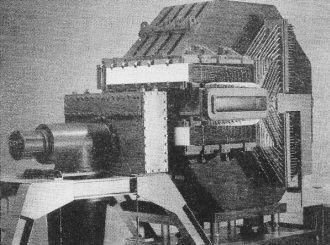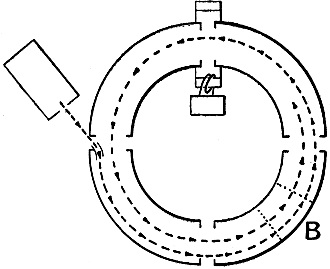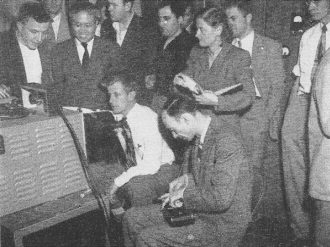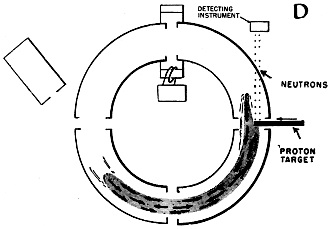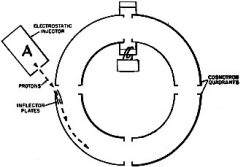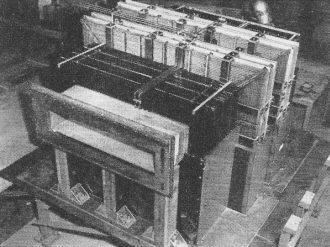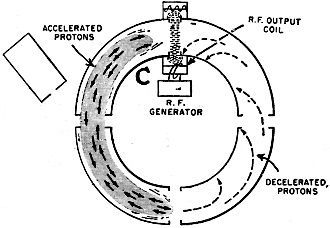The Cosmotron
|
|
When I first saw this photo of the Cosmotron in a 1952 issue of Radio−Electronics magazine, I thought maybe it was really a recovered crashed UFO from Area 51. Of course it couldn't be since the image is very sharp and clear, and after a century of supposed UFO sightings nobody has ever produced anything better than a poorly focused blob with a few dim lights on it. The Cosmotron was a proton accelerator, the first of its kind to impart energies in the gigaelectronvolt (GeV) range. Built at Brookhaven National Laboratory by the U.S. Atomic Energy Commission in 1948, it reached full energy in 1953 and it continued being used for research until 1966. Interestingly, the Cosmotron used a Van de Graaff generator as a high voltage source for accelerating protons. The first particle accelerators were physically linear - long pipes. They were limited in how fast particles could go because greater acceleration requires more distance. Eventually, circular structures were built to facilitate essentially an endless path as multiple trips around the circle are made. More energy is required by the apparatus to accelerate a massive particle around a circular path due to needing to constantly cancel its tangential velocity component. The Large Hadron Collider (LHC) built underground on the France-Switzerland border, is currently the world's largest. Here is a useful paper discussing the history of particle accelerators. The Cosmotron - Three billion volts speeds particles to near speed of light. The Cosmotron at Brookhaven National Laboratory. Protons - positively-charged nuclear particles - circle the huge track at almost the speed of light, develop billions of volts of energy for non-secret atomic research. Labeled sections are shown in detail in the accompanying diagrams and photographs. In the foreground are three of the 12 oil-diffusion pumps that maintain vital vacuum in the stainless-steel tube. The technician at the right is at one of the "windows" where targets for bombardment are inserted in the raceway.
B - Progressively stronger magnetic fields in four quadrants force protons to follow spiral path as they circle tube 350,000 times per second. Cross-section through Cosmotron at B shows stainless-steel proton tube at magnet center, continuous-evacuation pump at left. Octagonal core laminations are eight feet across. Windings are hollow copper bars filled with liquid coolant to remove heat of 7,000-ampere current.
D - Protons at desired energy level strike a swiftly-inserted target, give up positive charges. Now neutrons unaffected by electric or magnetic fields, they continue in straight lines to detecting instruments outside the magnet. Photo shows Brookhaven scientists at the instant protons first passed billion-volt mark. Cosmotron later produced energy levels above 3 billion volts. A - Proton source for the Cosmotron. Van de Graaff electrostatic high-voltage generator smashes hydrogen atoms, shoots protons and hydrogen ions at 3.6·million volt velocity down narrow tube at left for testing. When inverted L-shaped electro-magnet (center) is turned on, ions are deflected to center stub; lighter protons, deflected more, race through complex optical analyzers and rectangular inflector box to Cosmotron (lower right).
C - Turning on r.f. generator C gives whirling protons a 500-volt kick 4 million times a second. Protons approaching the field of the huge output coil are accelerated by negative half of r.f. cycle, decelerated by positive half. Slowed protons spiral inward, are absorbed by chamber walls. Speeded protons cluster, race faster and faster, reach billion-volt level in less than a second.
Posted December 7, 2021 |
|


